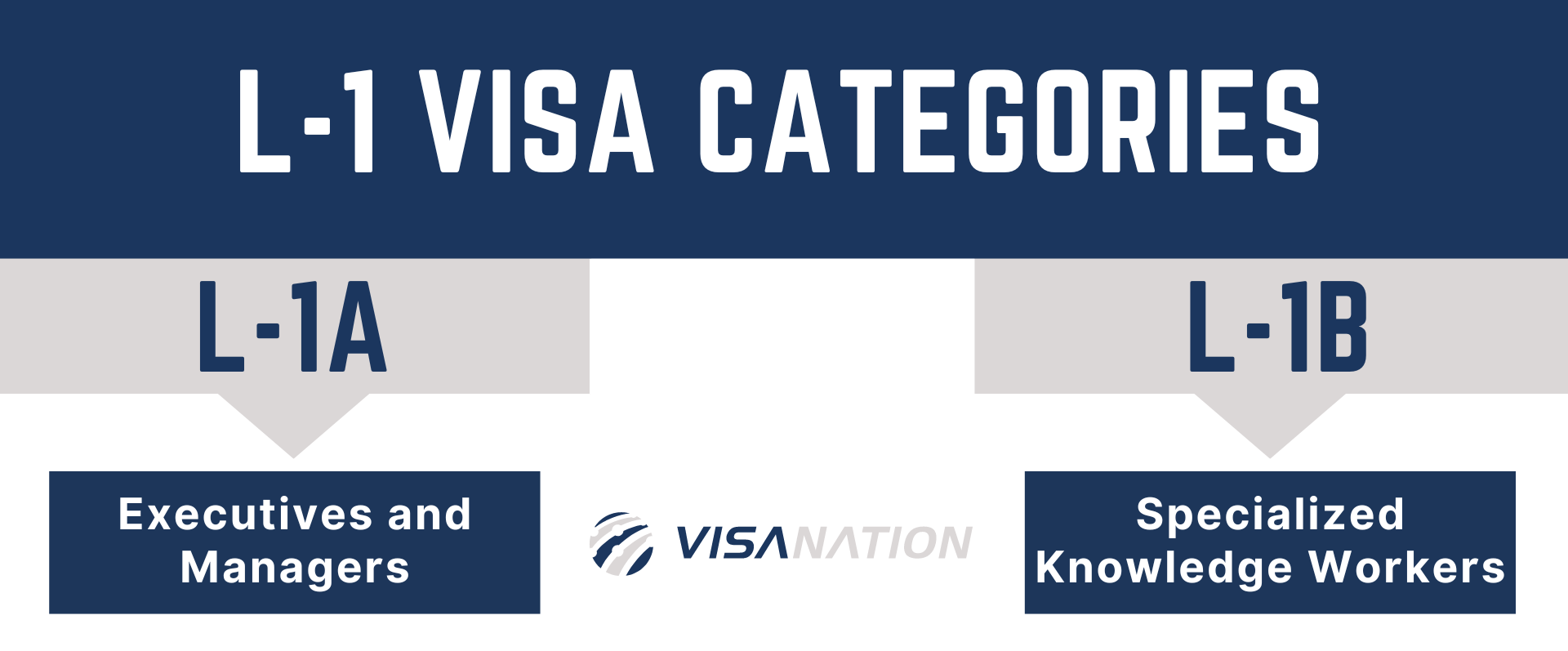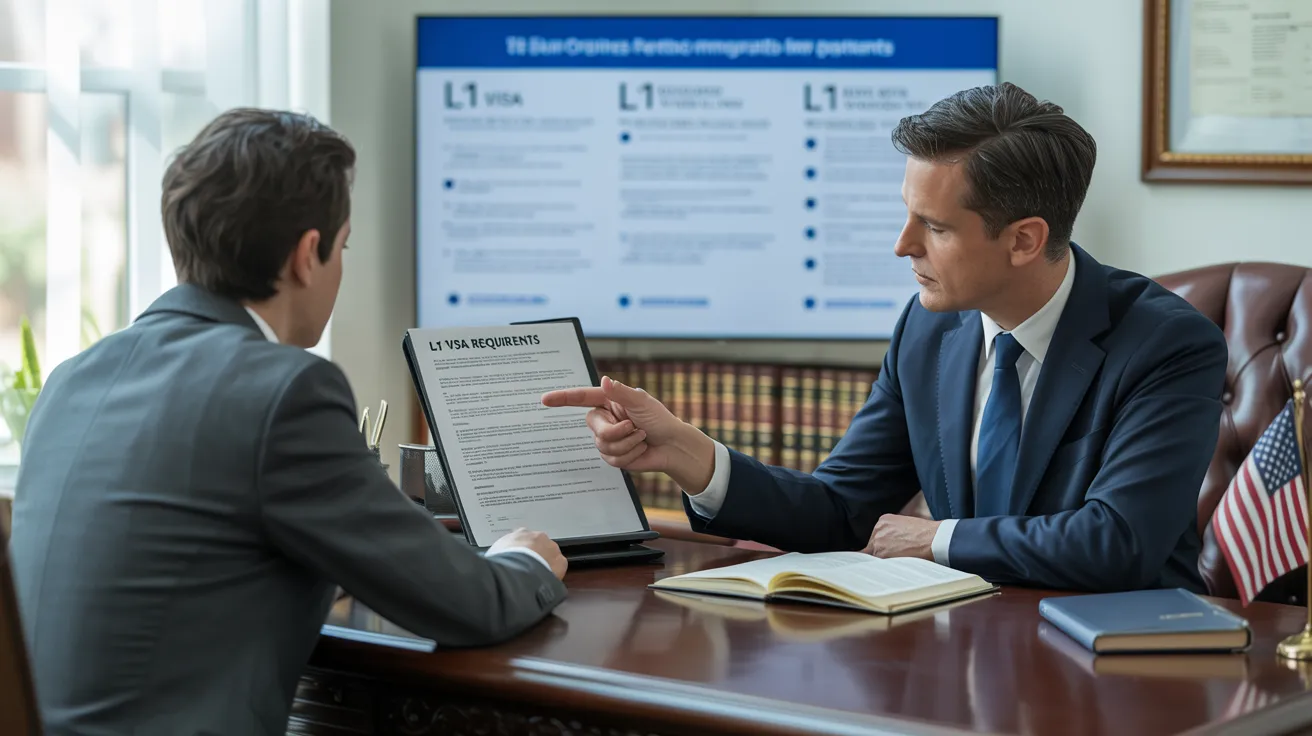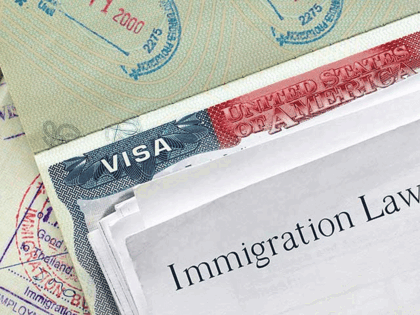Whatever You Required to Learn About the L1 Visa: Benefits, Demands, and A lot more
The L1 Visa offers as a vital device for multinational firms looking for to transfer employees to the United States, helping with both operational efficiency and the transfer of specialized knowledge. With distinct categories for execs and specialized experts, this visa provides numerous advantages, including potential pathways to long-term residency. Understanding the qualification needs and application procedure is necessary for an effective shift. As we check out the details of the L1 Visa, it becomes clear that navigating its complexities is critical for organizations aiming to leverage global skill effectively. What obstacles might you come across in the process?
Summary of the L1 Visa

Sorts Of L1 Visas

Multiple kinds of L1 visas provide to the varied demands of multinational companies looking to transfer staff members to the United States. Both key classifications of L1 visas are L1A and L1B, each developed for specific duties and obligations within an organization. L1 Visa Requirements.The L1A visa is intended for supervisors and execs. This classification permits business to move individuals that hold managerial or executive positions, enabling them to look after procedures in the U.S. This visa is valid for an initial period of up to 3 years, with the opportunity of extensions for a total amount of up to 7 years. The L1A visa is specifically helpful for companies looking for to establish a strong leadership visibility in the U.S. market.On the various other hand, the L1B visa is designated for employees with specialized understanding. This includes people who have innovative proficiency in details areas, such as exclusive modern technologies or one-of-a-kind processes within the firm. The L1B visa is also legitimate for a first three-year period, with extensions readily available for as much as 5 years. This visa classification is optimal for business that need workers with specialized skills to improve their operations and maintain an affordable side in the U.S.Both L1A and L1B visas allow for dual intent, suggesting that visa holders can make an application for long-term residency while on the visa. Comprehending the distinctions between these two categories is essential for organizations planning to browse the complexities of staff member transfers to the United States properly
Eligibility Requirements
To receive an L1 visa, both the employer and the employee need to meet details qualification standards set by U.S. immigration authorities. The L1 visa is made for intra-company transferees, enabling multinational companies to move workers to their united state offices.First, the company has to be a qualifying organization, which means it should have a parent business, branch, subsidiary, or associate that is doing service both in the U.S. and in the foreign nation. This connection is vital for demonstrating that the worker is being moved within the exact same business framework. The company has to also have actually been doing service for a minimum of one year in both locations.Second, the staff member needs to have been used by the foreign company for at the very least one constant year within the 3 years preceding the application. This work must remain in a managerial, exec, or specialized expertise capacity. For L1A visas, which accommodate supervisors and executives, the staff member needs to demonstrate that they will certainly remain to operate in a similar capacity in the U.S. For L1B visas, intended for employees with specialized knowledge, the individual have to possess one-of-a-kind knowledge that adds substantially to the business's operations.
Application Process
Steering the application procedure for an L1 visa involves numerous important steps that have to be completed accurately to assure a successful end result. The primary step is to figure out the appropriate group of the L1 visa: L1A for managers and executives, or L1B for workers with specialized understanding. This distinction is substantial, as it impacts the documents required.Once the classification is identified, the U.S. company have to file Type I-129, Request for a Nonimmigrant Employee. This kind must consist of detailed details about the business, the staff member's duty, and the nature of the job to be done in the U.S. Accompanying documentation generally consists of evidence of the relationship between the united state and foreign entities, evidence of the employee's credentials, and information relating to the task offer.After submission, the U.S. Citizenship and Migration Services (USCIS) will certainly examine the request. If accepted, the worker will certainly be alerted, and they can after that get the visa at a united state consulate or embassy in their home nation. This includes finishing Kind DS-160, the Online Nonimmigrant copyright, and arranging an interview.During the interview, the applicant has to provide different files, consisting of the approved Type I-129, proof of work, and any kind of additional supporting evidence. Following the meeting, if the visa is given, the employee will receive a visa stamp in their copyright, enabling them to get in the united state to benefit the funding employer. contact us Correct prep work and extensive paperwork are key to navigating this procedure successfully.
Advantages of the L1 Visa
One of the significant benefits of the L1 visa is its ability to promote the transfer of crucial workers from international workplaces to the United States. This visa is especially beneficial for multinational companies looking for to maintain consistency in procedures and leadership across boundaries. By allowing execs, managers, and specialized employees to function in the U.S., companies can assure that their most vital ability is offered to drive organization objectives.Another considerable advantage of the L1 visa is its reasonably uncomplicated application procedure compared to various other work visas. Organizations can petition for the L1 visa without the demand for a labor accreditation, which enhances the employment of foreign workers. Furthermore, the visa can be given for an initial period of as much as three years, with the possibility of extensions, assisting in long-term assignments.The L1 visa likewise gives a path to long-term residency. Employees on L1A visas (for supervisors and executives) can get an Eco-friendly Card after one year, expediting their adjustment to long-term condition. This feature is an appealing reward for gifted people trying to find security in the U.S. workforce.Additionally, L1 visa holders can bring their immediate member of the family to the united state under L2 status, allowing spouses and children to stay and research in the country, enhancing the overall appeal of this visa group. On the whole, the L1 visa serves as a necessary device for international organizations, promoting cross-border collaboration and skill flexibility.
Usual Challenges
While the L1 visa supplies countless advantages for international companies and their staff members, it is not without its obstacles. One noteworthy obstacle is the stringent documents and eligibility needs imposed by the united state Citizenship and Migration Solutions (USCIS) Firms should offer in-depth proof of the international employee's certifications, the nature of the service, and the qualifying relationship in between the U.S. and international entities. This process can be taxing and may call for lawful know-how to navigate successfully.Another difficulty is the capacity for examination throughout the request process. USCIS policemans might question the authenticity of the company operations or the employee's function within the organization. This scrutiny can cause hold-ups or perhaps rejections of the copyright, which can greatly affect the business's functional strategies and the employee's occupation trajectory.Furthermore, the L1 visa is linked to the sponsoring employer, which suggests that job modifications can complicate the visa standing. If an L1 visa owner desires to switch over employers, they should often seek a various visa classification, which can include intricacy to their immigration journey.Lastly, maintaining conformity with L1 visa policies is vital. Companies have to ensure that their worker's role lines up with the first request and that the service continues to meet the qualification needs. Failure to do so can cause retraction of the visa, impacting both the employee and the company. These obstacles demand detailed preparation and recurring monitoring to ensure an effective L1 visa experience.
Tips for Success
To efficiently browse the L1 visa procedure, careful prep work is critical. Beginning by completely recognizing the particular demands for the L1 visa group you are getting, whether L1A for managers and executives or L1B for staff members with specialized knowledge. Gather all necessary documentation early at the same time, consisting of proof of your employment history, organizational structure, and the nature of business operations.Engage legal counsel experienced in migration law to lead you through the complexities of the application. A lawyer can assist guarantee that your application is full, accurate, and engaging. They can additionally help in getting ready for potential ask for proof (RFEs) by proactively addressing locations that may elevate questions.Additionally, keep clear communication with your employer, that need to provide necessary support for your application. L1 Visa. Confirm that they recognize their responsibilities, consisting of filing the essential applications and giving documentation that corroborates your role in the organization.Prepare for the visa interview by practicing response to usual inquiries regarding your expert background and the nature of your employment. Demonstrating self-confidence and clarity can greatly impact the outcome of your application
Often Asked Concerns
Can Family Members Members Accompany L1 Visa Holders?
Yes, family participants can go along with L1 visa holders. Spouses and single children under 21 years old are eligible for L2 visas, which allow them to live and study in the USA throughout the L1 holder's remain.
Just How Long Can L1 Visa Owners Remain In the U.S.?
L1 visa holders can initially stay in the U.S. for up to 3 years (L1 Visa). This period might be expanded, permitting an optimum remain of seven years for L1A visa holders and 5 years for L1B visa owners
Is the L1 Visa a Double Intent Visa?

Can L1 Visa Owners Apply for a Permit?
Yes, L1 visa holders can make an application for a permit - L1 Visa. The L1 visa supports dual intent, permitting holders to seek irreversible residency while keeping their non-immigrant standing, facilitating a smoother changeover to a copyright
What Happens if an L1 copyright Is Denied?
If an L1 copyright is denied, the candidate might obtain a notification describing the reasons for denial. L1 Visa. They can appeal the decision, reapply, or explore different visa choices depending on their situations and credentials
Conclusion
In summary, the L1 Visa offers as an essential tool for multinational firms seeking to move workers to the United States. Comprehending the distinctions between L1A and L1B classifications, in addition to the qualification needs and application processes, is essential for effective navigation of this non-immigrant category. The advantages provided, consisting of structured applications and pathways to irreversible residency, even more boost its charm. Attending to usual difficulties successfully can result in an extra positive result in the copyright process.